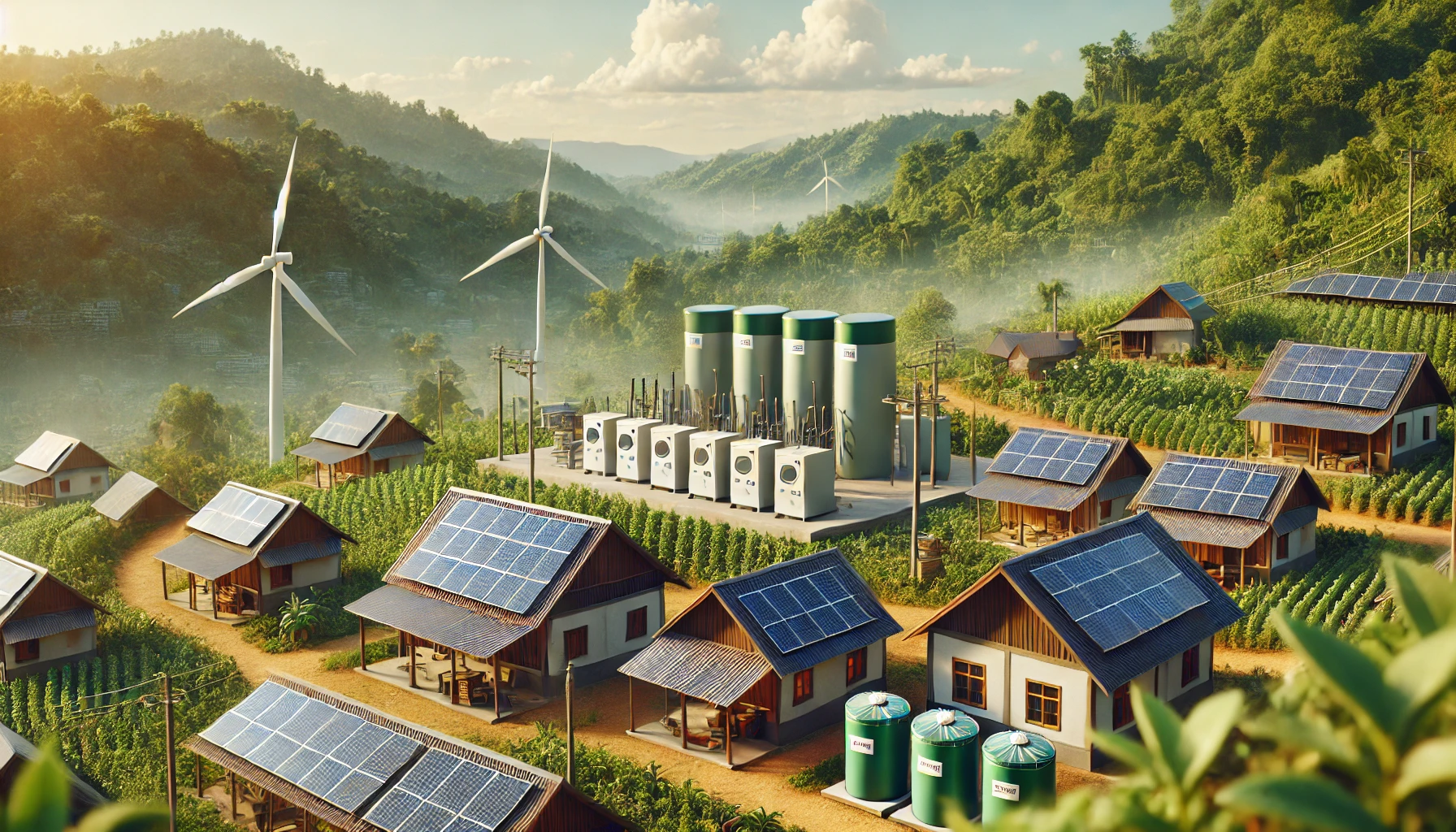Microgrids for Decentralized Power: A Game-Changer for Rural Electrification

The Microgrid Revolution: Powering the Future, One Village at a Time
Imagine living in a remote village, miles from the nearest power grid, where electricity is a luxury—now, imagine a small system that can independently supply power to your entire community. This isn’t science fiction; it’s the power of microgrids. Microgrids are localized energy networks that can operate independently or connect to larger grids, bringing reliable electricity to regions that have long been in the dark. From reducing fossil fuel reliance to providing more sustainable energy solutions, microgrids are a transformative technology for rural electrification.
How Microgrids Work: A Small but Mighty Powerhouse
Microgrids are not your average electrical systems. They’re designed to be self-sustaining, combining multiple sources like solar, wind, and even small-scale hydroelectric power. The secret sauce? Smart control systems that efficiently manage energy production and distribution, ensuring that supply meets demand at any given time. With built-in storage—think batteries on steroids—microgrids can store excess energy during off-peak hours and distribute it when it’s needed most. It's like having an eco-friendly power plant right in your backyard.
Reducing Reliance on Fossil Fuels: Cleaner, Greener Power
One of the biggest selling points of microgrids is their ability to reduce reliance on fossil fuels. Traditional grids often depend heavily on coal or natural gas, especially in remote regions. Microgrids, on the other hand, can be designed around renewable energy sources, drastically cutting carbon emissions. Recent studies show that rural communities using microgrids have seen a reduction in fossil fuel consumption by up to 60%. That's not just good for the planet, it’s good for the communities, creating a cleaner and healthier environment.
Statistics Speak: The Rise of Microgrid Adoption
According to a recent report by the International Energy Agency, microgrid installations are on the rise, especially in developing regions. Over the past five years, microgrid capacity has grown by 25%, with an estimated 30 million people in remote areas gaining access to electricity through these systems. And it’s not just developing nations benefiting—countries like the U.S. and Australia are adopting microgrids to enhance energy resilience in disaster-prone areas. In fact, the U.S. Department of Energy estimates that microgrid use could reduce outage costs by $100 billion annually.
Why Microgrids are Perfect for Rural Electrification
Rural areas are often the last to benefit from traditional grid expansions due to the high costs and technical challenges. Microgrids, however, offer a decentralized solution, eliminating the need for expensive infrastructure like long transmission lines. They can be tailored to the specific needs of a community, whether it’s a small village or a remote industrial operation. More importantly, microgrids provide reliability. In areas prone to natural disasters, where the central grid may be vulnerable, microgrids can ensure power stays on even when the larger grid fails.
Challenges and Opportunities: What's Holding Microgrids Back?
While microgrids offer immense potential, they’re not without challenges. High upfront costs and complex regulatory environments can slow down adoption. However, as renewable energy technology becomes cheaper and more efficient, these barriers are gradually falling. Governments and international organizations are increasingly supporting microgrid projects through grants and subsidies, recognizing their role in achieving global energy goals. Furthermore, innovations in energy storage and blockchain for grid management are making it easier to overcome technical hurdles, paving the way for broader implementation.
Future Trends: The Role of AI and Blockchain in Microgrid Management
Here’s where things get really interesting—artificial intelligence (AI) and blockchain are starting to play a role in optimizing microgrid management. AI can predict energy consumption patterns, helping microgrids run more efficiently, while blockchain technology ensures secure and transparent transactions between energy producers and consumers. Think of it as a futuristic marketplace where you can buy and sell energy credits, all powered by your local microgrid. This combination of technologies promises to make microgrids even more resilient, autonomous, and cost-effective.
Conclusion: The Power of Small to Make a Big Difference
Microgrids are more than just an alternative energy solution; they represent a paradigm shift in how we think about power distribution, especially in rural areas. By reducing reliance on fossil fuels, providing reliable electricity, and leveraging the latest technologies like AI and blockchain, microgrids are helping to close the energy gap in remote regions. The question now is, how far can this decentralized revolution go? Will microgrids become the new norm for rural electrification worldwide?
Interactive Question
How do you think microgrids will evolve in the next decade, especially with advancements in AI and blockchain? Could they eventually replace traditional power grids in certain regions?



